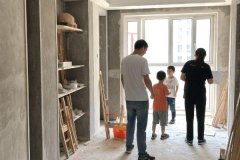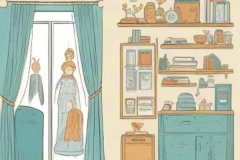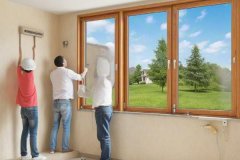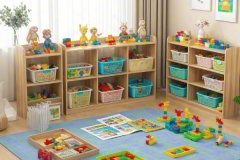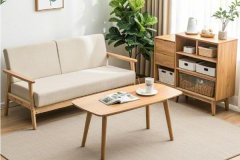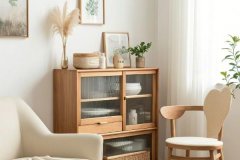Childproofing your home: A complete guide
Childproofing Your Home: A Complete Guide
Creating a safe environment for your child is one of the most important steps you can take as a parent. From crawling infants to curious toddlers, every stage of development brings new risks. This guide covers essential steps to childproof every room in your home, ensuring your little one’s safety while fostering their independence.

1. General Childproofing Principles
-
Supervision is key: No amount of childproofing replaces active supervision.
-
Get down to their level: Crawl around your home to identify hazards from a child’s perspective.
-
Stay updated: Reassess safety measures as your child grows and gains new abilities.
2. Room-by-Room Childproofing Checklist
Living Room/Family Room
-
Secure furniture: Anchor bookshelves, TVs, and heavy furniture to walls using anti-tip straps to prevent tipping.
-
Cover sharp edges: Use corner guards on coffee tables, fireplace hearths, or other hard surfaces.
-
Cord management: Tie up blind cords or replace them with cordless blinds to avoid strangulation risks.
-
Outlet covers: Install sliding safety covers or outlet plates to prevent electrical shocks.
-
Small objects: Keep coins, batteries, magnets, and toys with small parts out of reach (choking hazards).
Kitchen
-
Stove safety: Use stove knob covers to prevent accidental gas/oven activation. Install a stove guard to block access to hot pots.
-
Lock cabinets/drawers: Use childproof latches on cabinets containing cleaners, knives, or glassware.
-
Appliance safety: Keep toasters, blenders, and other appliances unplugged and stored away.
-
Trash can: Use a lidded, lockable trash can to deter curious hands.
Bathroom
-
Medicine and chemicals: Store all medications, vitamins, and cleaning products in locked cabinets.
-
Toilet locks: Install a toilet lid lock to prevent drowning risks.
-
Slip prevention: Use non-slip mats in the bathtub and on floors.
-
Temperature control: Set your water heater to 120°F (49°C) to avoid scalding.
Bedrooms
-
Crib safety: Ensure crib slats are no more than 2.375 inches apart. Avoid loose bedding, stuffed animals, or bumpers.
-
Window guards: Install window stops or guards to prevent falls (screens alone aren’t secure).
-
Dresser anchors: Secure dressers and changing tables to walls.
-
Toy storage: Keep older kids’ toys (with small parts) separate from younger siblings’ areas.
Stairs and Hallways
-
Safety gates: Install hardware-mounted gates at the top and bottom of stairs (pressure gates are less secure).
-
Clear pathways: Remove tripping hazards like loose rugs or toys.
-
Night lights: Use soft lighting to help older kids navigate safely at night.
Nursery/Playroom
-
Toy safety: Check for recalls and avoid toys with sharp edges or loose parts.
-
Battery compartments: Secure battery-operated toys with screws to prevent access.
-
Cordless window coverings: Replace any curtains or blinds with dangling cords.
3. Hidden Hazards to Address
-
Plants: Remove toxic plants (e.g., lilies, philodendrons, poinsettias) or place them out of reach.
-
Button batteries: These small batteries (found in remotes, toys) can cause fatal internal burns if swallowed.
-
Magnets: High-powered magnets (in toys or decor) are extremely dangerous if ingested.
-
Fireplace/tools: Use a fireplace screen and store tools (lighters, matches, tools) in locked drawers.
4. Emergency Preparedness
-
First-aid kit: Keep one in an accessible location and learn CPR for infants/children.
-
Poison control: Save the national poison control hotline number (e.g., 1-800-222-1222 in the U.S.).
-
Fire safety: Install smoke detectors and carbon monoxide alarms; practice fire escape plans.
5. Childproofing Products to Consider
-
Multi-purpose latches: For cabinets, drawers, and refrigerators.
-
Door knob covers: Prevent access to unsafe rooms (e.g., garages, basements).
-
Edge and corner protectors: Soften sharp furniture edges.
-
Anti-scald devices: For faucets and showerheads.
-
Baby monitors: Use video monitors to keep an eye on sleeping or playing children.
6. Final Tips
-
Regularly test safety devices: Latches, gates, and locks can wear out over time.
-
Educate caregivers: Ensure babysitters, grandparents, and siblings understand safety rules.
-
Stay calm: Accidents happen—focus on prevention, not perfection.
By systematically addressing each area of your home, you’ll create a safer space for exploration and growth. Remember, childproofing is an ongoing process that evolves with your child’s development. When in doubt, consult resources like the American Academy of Pediatrics (AAP) or professional childproofer services for tailored advice.Babyproofing Your Home: Essential Requirements for Safety
Bringing a baby home means creating a secure environment where curiosity and exploration can thrive without unnecessary risks. Babies grow quickly, and their mobility (rolling, crawling, pulling up) introduces new hazards. Below is a comprehensive checklist to babyproof your home effectively.
1. General Babyproofing Principles
-
Start early: Babyproof before your baby becomes mobile (ideally by 3–4 months).
-
Prioritize high-risk zones: Focus on areas like the nursery, kitchen, and stairs first.
-
Think beyond "baby level": Babies reach, grab, and put everything in their mouths—secure hazards up to 4 feet high.
-
Regularly reassess: Update safety measures as your baby grows and gains new skills.
-
2. Room-by-Room Babyproofing Requirements
Nursery
-
Crib safety:
-
Slat spacing ≤ 2.375 inches (6 cm) to prevent head entrapment.
-
Firm mattress with a fitted sheet—no pillows, blankets, or stuffed animals (SIDS risk).
-
Avoid crib bumpers, mobiles with detachable parts, or dangling cords.
-
-
Anchor furniture: Secure dressers, bookshelves, and changing tables to walls with anti-tip straps.
-
Window safety: Install window guards or stops to limit openings to ≤4 inches.
-
Outlet covers: Use sliding/recessed covers (avoid removable plug-style covers, which pose choking risks).
-
Cord-free environment: Replace blinds/curtains with cords with cordless alternatives.
Kitchen
-
Cabinet/drawer locks: Secure cabinets containing cleaning supplies, sharp tools, or glassware.
-
Stove guards: Block access to burners and use knob covers to prevent accidental gas/oven activation.
-
Appliance safety: Keep small appliances (toasters, blenders) unplugged and stored away.
-
Trash can: Use a locked, lidded bin to prevent access to choking hazards or harmful waste.
Living Areas
-
Furniture anchoring: Secure TVs, bookshelves, and heavy decor to walls.
-
Corner guards: Cover sharp edges on coffee tables, fireplace hearths, and entertainment centers.
-
Choking hazards: Remove small items (coins, batteries, magnets, toy parts) from low surfaces.
-
Fireplace safety: Use a sturdy gate or screen to block access.
Bathroom
-
Toilet locks: Prevent drowning risks with a toilet lid lock.
-
Medicine/chemical storage: Keep all products in locked cabinets, even if they’re "natural."
-
Non-slip mats: Place in bathtubs and on floors to avoid slips.
-
Water temperature: Set water heater to ≤120°F (49°C) to prevent scalding.
Stairs and Hallways
-
Safety gates: Install hardware-mounted gates (not pressure gates) at the top and bottom of stairs.
-
Clear pathways: Remove tripping hazards (rugs, toys) to prevent falls while carrying the baby.
-
-
-
-
-
-
-
3. Critical Hidden Hazards
-
Button batteries: Found in remotes, toys, and gadgets—secure battery compartments with screws.
-
Magnets: High-powered magnets (in toys or decor) can cause fatal internal damage if swallowed.
-
Toxic plants: Remove or elevate plants like lilies, pothos, and aloe vera.
-
Cords and strings: Blind cords, phone chargers, and curtain ties pose strangulation risks.
4. Safe Sleep Requirements
-
ABCs of sleep: Alone, on their Back, in a Crib/bassinet with a firm mattress.
-
Bare crib: No soft bedding, pillows, or stuffed animals until age 1+.
-
Monitor placement: Use a baby monitor (audio or video) to keep tabs during naps and nighttime.
5. Emergency Preparedness
-
Poison control: Save the national hotline (e.g., 1-800-222-1222 in the U.S.).
-
First-aid kit: Include baby-specific items (e.g., saline drops, thermometer).
-
CPR training: Learn infant CPR and choking rescue techniques.
-
Smoke/carbon monoxide detectors: Test monthly and replace batteries yearly.
6. Essential Babyproofing Products
-
Outlet covers (sliding or recessed).
-
Cabinet/drawer latches (magnetic or adhesive).
-
Anti-tip furniture straps.
-
Safety gates (hardware-mounted for stairs).
-
Door knob covers (to restrict access to unsafe rooms).
-
Edge/corner protectors.
7. Final Tips
-
Test devices monthly: Latches, gates, and locks can loosen over time.
-
Supervise constantly: Even a fully babyproofed home isn’t substitute for attentive care.
-
Stay informed: Follow guidelines from the AAP (American Academy of Pediatrics) and CPSC (Consumer Product Safety Commission).
Safety Note: Babyproofing is not a one-time task—reassess risks as your baby grows. When in doubt, err on the side of caution. A safe home lets your baby explore freely while giving you peace of mind.
-
-
-
-
